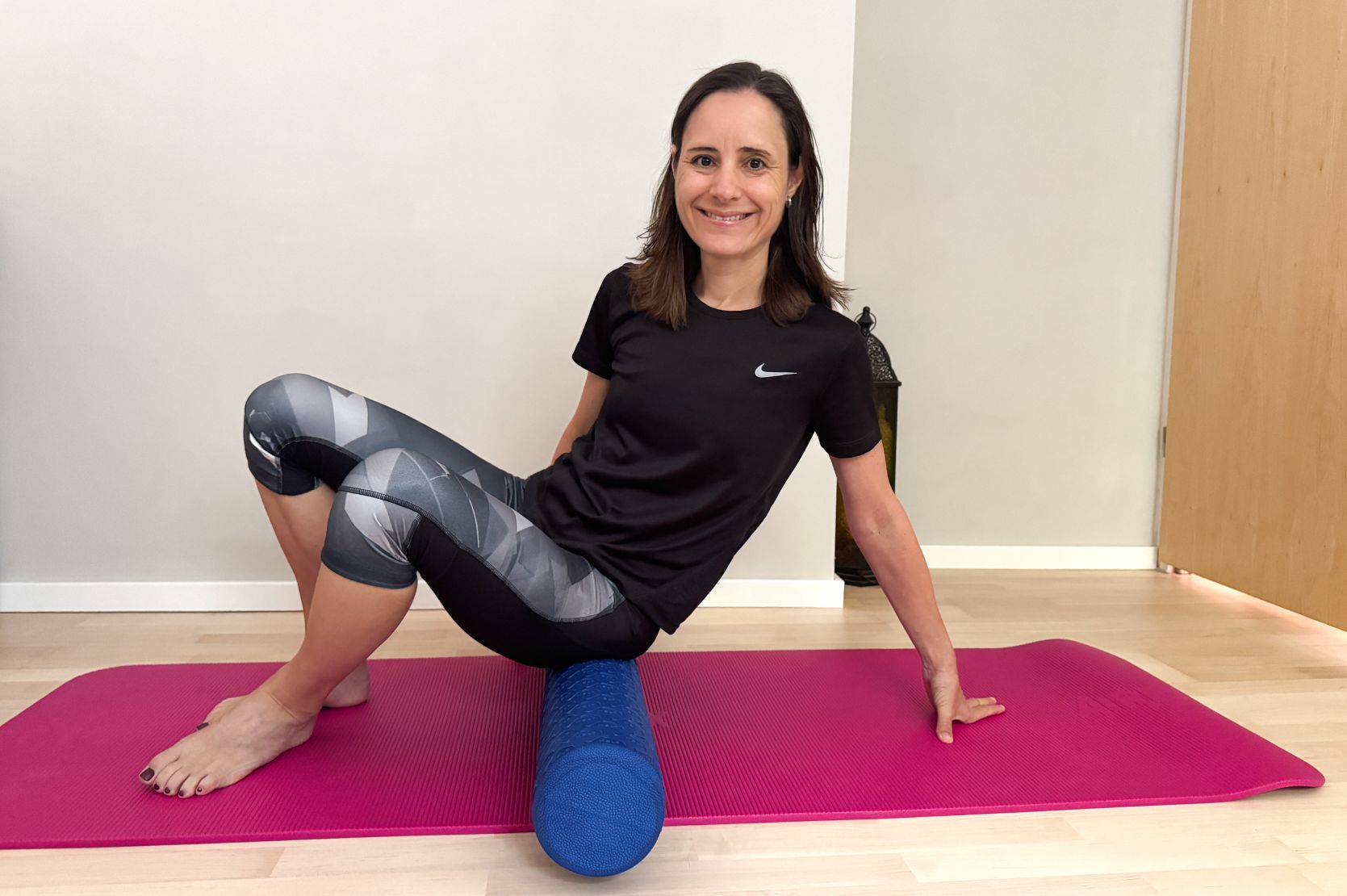
What is the MELT Method®?
Author: Kerstin Goldstein
Last updated: 2. October 2025
With fibromyalgia, it is often a balancing act: exercise is good, but too much or too intensive training can quickly turn into the opposite.
This is exactly where the MELT Method® comes in – a gentle technique that can bring the fascia and nervous system into balance.
In this article you will find out what the MELT Method® is, how it works and why it can be particularly interesting for people with fibromyalgia.
What is the MELT Method®?
The MELT Method® was created by manual therapist Sue Hitzmann. “MELT” stands for Myofascial Energetic Length Technique – a gentle approach designed to rehydrate and restore the fascia. What makes it special: instead of using hard foam rollers, MELT® works with soft rollers and small balls that help release tension and calm the nervous system.
Unlike traditional fascia training, MELT® is not about pressing hard or pushing through discomfort. It’s a slow, mindful practice that often brings noticeable relief within just a few minutes. The focus is less on intensity and more on tuning into your body’s signals and responding with awareness.
Have you ever done anything for your fascia?
What are fascia actually?
Fascia is a fascinating, yet often underestimated tissue in the body. You can picture it as a fine but incredibly strong network of connective tissue that runs from head to toe. This network wraps around muscles, bones, organs, and even nerves, giving your body stability, structure, and support.
A good image for fascia is an elastic spider’s web or a tightly woven nylon net: strong, supportive, and at the same time flexible. When fascia is healthy, it allows your muscles to work smoothly together, so your movements feel fluid and pain-free.
Sue Hitzmann, the founder of the MELT Method®, often compares fascia to a sponge. When the sponge is full of fluid, it’s soft, elastic, and adaptable. But when it dries out, it becomes stiff and brittle. Fascia can behave the same way: if it’s poorly supplied with fluid, it sticks together and hardens, which may cause pain and restrict movement.
Another way to think about it: fascia is like chewing gum. Fresh and elastic gum stretches easily and moves smoothly. Old gum, however, becomes tough, sticky, and tears quickly – much like hardened fascia that no longer glides well.
This tissue is particularly important when it comes to chronic pain conditions such as fibromyalgia. If fascia loses its ability to glide, it can create tension throughout the body.
And this is exactly where the MELT Method® helps: with gentle pressure and small, targeted movements using soft rollers and balls, the fascia tissue is rehydrated and relaxed. Step by step, the network becomes more flexible and supple again – which can reduce pain, improve mobility, and support your overall well-being.
What’s special: You can easily apply the MELT Method® at home and do something good for yourself – ideal for supporting fascia health in the long term.
The 4 principles of the MELT Method® – simply explained
For MELT® to unfold its full effect, there are four key steps you’ll go through:
Reconnect
At the start, take a short moment to tune into your body. Where do you notice tension? Where does something feel blocked or uncomfortable? This mindful check-in helps you identify the areas that need attention most. After the exercises, you’ll often feel right away how your body has changed.
Rebalance
A central part of MELT® is restoring balance in what Sue Hitzmann calls the “NeuroCore” – the system that helps your body stay stable and upright with ease. Through conscious breathing and gentle core activation, you support your body’s natural reflexes that keep you safe and balanced in everyday life.
Rehydrate
Fascia needs fluid to stay supple and flexible – much like a sponge that’s soft when it’s full of water. With specific MELT® techniques, you stimulate fluid flow in the connective tissue. This helps your joints stay mobile and resilient, and supports pain-free, smooth movement.
Release
In the last step, you target areas where tension often builds up – such as the neck, back, or feet. By applying gentle pressure with the MELT® rollers and balls, you reduce stress on the joints and ease muscular tightness. The result: more freedom and lightness in your movements.
Together, these four principles create a gentle but effective way to care for your fascia and support your well-being – and best of all, you can easily apply them yourself at home.
How I discovered the MELT Method®
I first heard about fascia back in 2014 at the IDEA World Fitness Conference in Los Angeles. Until then, I had no idea that tools like fascia rollers or balls even existed – in Germany they weren’t really available at all.
By chance, I attended a workshop with Sue Hitzmann, the founder of the MELT Method®. I was immediately fascinated and so impressed that I packed a MELT® roller, a set of the small balls, and Sue’s book into my hand luggage for the flight home. Once back, I eagerly started reading – but soon put the book aside again. At that time, the terminology felt too complicated, and without any prior knowledge about fascia, I quickly felt overwhelmed.
Over the years, fascia training became more popular, and I completed various courses in fascia fitness and fascia work with Pilates. My collection of rollers and balls kept growing – but the MELT® set remained untouched in the corner.
That changed in the summer of 2024. Just six weeks before a long-planned multi-day hike in Nepal, I developed severe pain in my plantar fascia, the connective tissue on the sole of my foot. I knew instinctively that a quick fix from cortisone injections or shockwave therapy wouldn’t be helpful for me.
I began researching intensively: YouTube videos, exercises, aids, and special shoes for plantar fasciitis. For two weeks I tried everything – cooling packs, foot baths, strengthening exercises, even massaging with a small Blackroll fascia roller. But nothing really helped. The date of my hike was approaching, yet I could barely make it to the supermarket.
Then I suddenly remembered the little MELT® balls tucked away in my cupboard. I pulled out the book again, revisited Sue’s videos, and started practicing the foot techniques daily. Within just four weeks, the pain had completely disappeared. In mid-October 2024, I boarded my flight to Nepal – pain-free and ready for the hike.
This experience was so motivating that I went on to complete the MELT® Hand & Foot Therapy Instructor training in early 2025, followed shortly after by the full MELT® Instructor Level 1 certification.
I also created a 3-month MELT® program, where I show you step by step how to use the balls and roller to loosen your fascia, reduce pain, and regain lightness in movement

Why I recommend MELT® especially for fibromyalgia
Most people with fibromyalgia are familiar with the problem: even a slight overload of exercise can lead to days of discomfort. MELT® offers a valuable alternative here because:
I constantly hear from my MELT® customers how they feel lighter, more relaxed and freer in their movements after a session.
Do you feel like your legs are heavy, your back is stiff and your shoulders are constantly hunched? Then MELT® could help you to relax better.
First steps: How to get started with MELT®
When I teach MELT®, we always start with small, simple exercises. This allows you to familiarize yourself with the movements and at the same time feel how your body reacts.
Popular starter exercises are, for example:
Foot release with the ball: Ideal for relieving tension in the feet and legs.
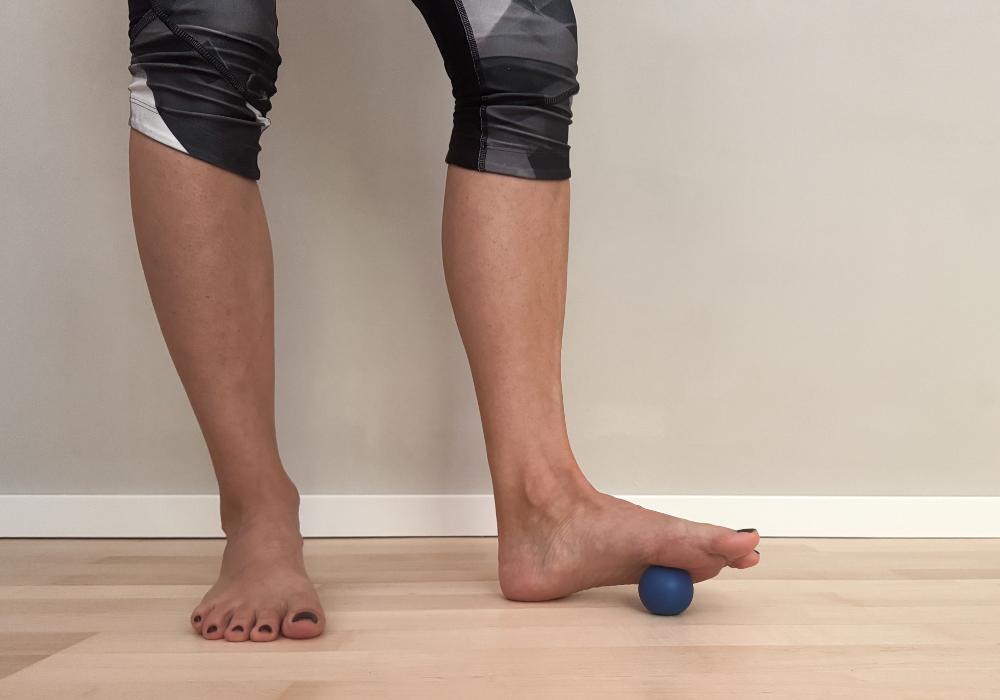
Hand release: Relaxes the arm muscles and relieves strain on the shoulders and neck.
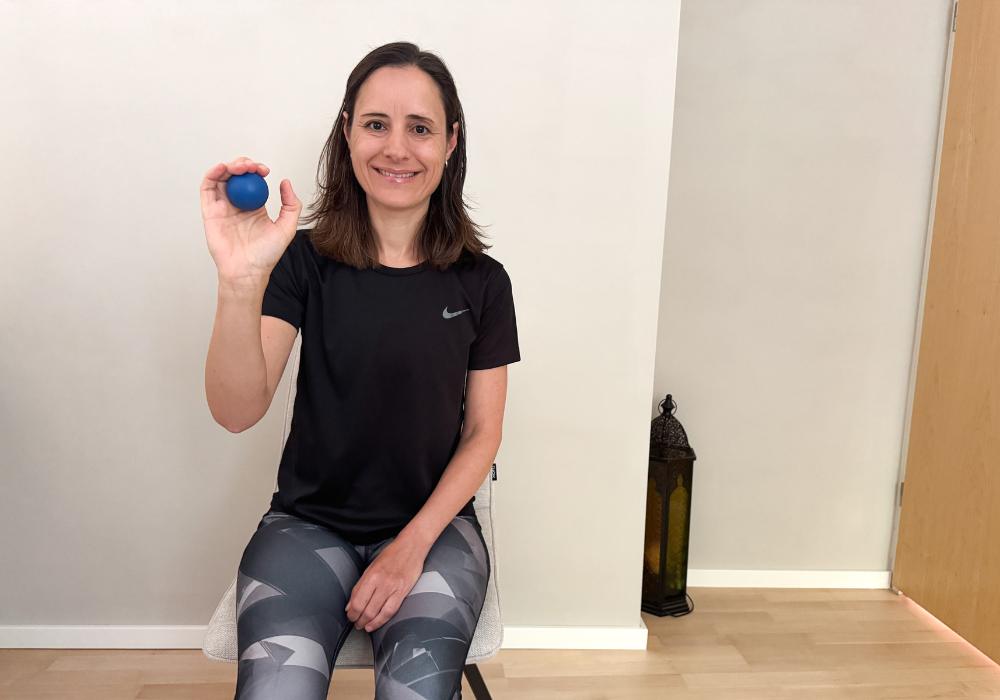
Gentle rolling along the spine: Helps to make the back more flexible and relieve tension.
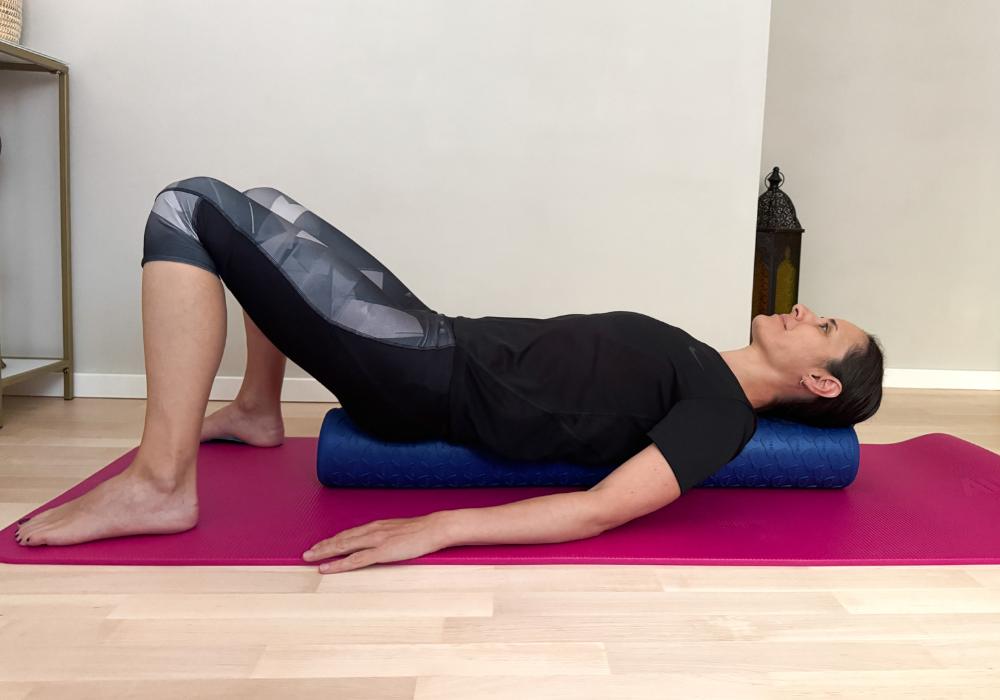
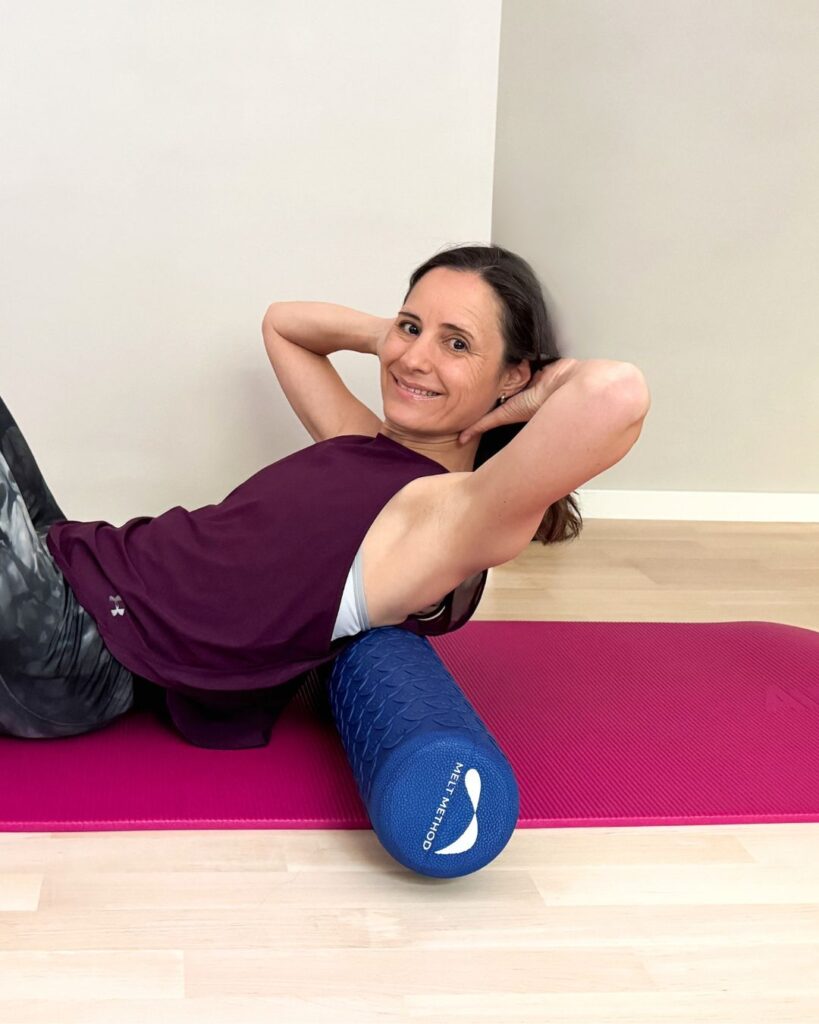
My tips for starting MELT® with fibromyalgia
Start slowly: Start with 1-2 exercises and practise them for a few days in a row.
Observe your body: Pay attention to how your body feels before, during and after the session.
Short units: Just 5-10 minutes can make a difference – less is often more.
Use original MELT® equipment: Use the special MELT® rollers and balls to keep the pressure comfortable.
Regularity counts: It’s better to practise more often for a short time than rarely for a long time.
Pay attention to your energy on the day: Adjust the intensity instead of overstraining yourself.
Conclusion: Gentle support, guided by expertise
The MELT Method® provides a sophisticated yet gentle way to care for your fascia, release tension, and enhance mobility. For those with fibromyalgia, it offers a tailored approach to support your body — without strain, without pressure, and with the confidence of knowing you are actively taking care of yourself.
👉 In my 3-month MELT® program, I work with you personally via live Zoom sessions, showing exactly which exercises with the balls and roller are most effective for your body. Reserve your free consultation today and discover how MELT® can become your personalized path to relief and mobility.
Mail from the Wellness Oasis
Receive valuable tips, exercises, and inspiration about fibromyalgia directly in your inbox. Sign up now and stay motivated on your journey to more ease and well-being!
